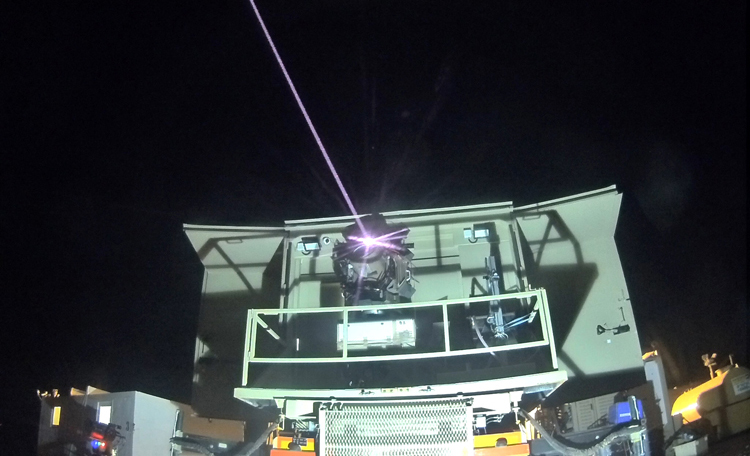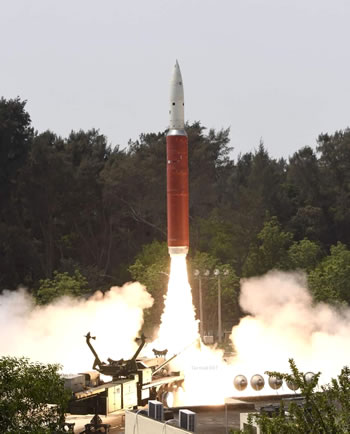INDIAN ARMED FORCES CHIEFS ON OUR RELENTLESS AND FOCUSED PUBLISHING EFFORTS

The insightful articles, inspiring narrations and analytical perspectives presented by the Editorial Team, establish an alluring connect with the reader. My compliments and best wishes to SP Guide Publications.

"Over the past 60 years, the growth of SP Guide Publications has mirrored the rising stature of Indian Navy. Its well-researched and informative magazines on Defence and Aerospace sector have served to shape an educated opinion of our military personnel, policy makers and the public alike. I wish SP's Publication team continued success, fair winds and following seas in all future endeavour!"

Since, its inception in 1964, SP Guide Publications has consistently demonstrated commitment to high-quality journalism in the aerospace and defence sectors, earning a well-deserved reputation as Asia's largest media house in this domain. I wish SP Guide Publications continued success in its pursuit of excellence.
DEWS and EMP Weapons
The significance of these capabilities cannot be overstated, as they hold the potential to reshape the landscape of defence technology and significantly enhance operational capabilities
 |
The Author is Former Director General of Information Systems and A Special Forces Veteran, Indian Army |

The preponderance of swarm drones in conflict zones around the world demands effective defence against such attacks on priority. Swarms of thousands of cheap drones cannot be effectively tackled with air defence systems and expensive missiles. The Houthi drone attacks of yore targeting oil facilities of Saudi Arabia and the recent attack in Tel Aviv through the Israeli Iron Dome air defence system proves the point.
The answer as of now apparently is microwaves. A high-powered microwave (HPM) is a type of directed energy weapon (DEW) that generates a cone of electromagnetic interference to disable the electronics of drones and missiles. Unlike radio jammers, which confuse drone guidance, the microwave weapon destroys them.
Chinese military scientists claim to have developed a compact microwave weapon for drones, capable of performing radar operations and electronic jamming, which could alter the balance of military power
The US Army has awarded the US firm 'Epirus Inc' a $66 million contract for the 'Leonidas Counter-Uncrewed Aerial System', which produces a powerful beam of microwaves, generating currents inside electronic devices, causing them to overload. Epirus first demonstrated the Leonidas Counter-Uncrewed Aerial System in 2020 and introduced the current third-generation model in 2022. The system was inducted into the US Army last year. It is available in two versions – mobile versioned mounted on a wheeled vehicle, as well as the pod version with multiple mount options for maximum flexibility across mission needs.
In December 2023, Chinese military scientists and industry engineers claimed to have developed a microwave source for drones that surpasses anything currently available worldwide; to be fitted in a drone, and block an even bigger area than the US microwave weapon - altering the balance of military power permanently. This was claimed in a paper published in the High Power Laser and Particle Beams journal involving a powerful yet compact microwave weapon designed to fit various drone models. The compact design allows the weapon to be customised to fit on different drones seamlessly, offering a “plug-and-play” capability. It can also be used as a radar while jamming enemy radar and communication systems.

(RIGHT) LEONIDAS, EPIRUS' BREAKTHROUGH COUNTER-ELECTRONICS SYSTEM
Researchers claim the drone-mounted microwave source can perform multiple functions; radar operation, target monitoring on the ground, in water, or in the sky, and electronic jamming. It can operate over an ultra-wide frequency range and compete with larger weapons, such as professional electronic warfare aircraft. The weapon's core component is a device called the travelling wave tube, a vacuum where electrons generate microwave power.
The microwave source is said to work synergistically, overcoming challenges that arise when different components, such as radar transceivers and jamming devices, operate simultaneously. The Chinese military aims to expand the application of these microwave weapons by integrating them into hypersonic aircraft and other near-space platforms, increasing the PLA's influence in electronic warfare globally. Incidentally, Jin Canrong, a political strategist at Beijing's Renmin University, claimed on Chinese television that the PLA used microwave weapons in August 2020 to force Indian soldiers off the contested peaks in eastern Ladakh. His claim was, however, refuted by the Indian side.
South Korea has deployed a laser weapon system, called 'Block-I', to shoot down drones, offering a cost-effective, invisible, and noise-free solution
According to an article published in 'Military Watch' on March 24, 2024, Russia is developing an electromagnetic pulse (EMP) gun, which could expand the range of achievable targets. The article says that this development poses a serious threat, potentially edging out the already potent Su-57 and the soon to be launched MiG-41. Quoting a source inside Russia, the write up suggests possible use of a less powerful version of this EMP gun as an effective deterrent against unmanned aerial vehicles (UAVs).

(RIGHT) KOREAN LASER ANTI-AIRCRAFT WEAPON (BLOCK-I) THAT APPLIES LASERS TO WEAPONS
It is also speculated that the yet-to-be-launched MiG-41 might be equipped with R-37 missiles. The Russian publication 'Izvestia' reports that the MiG-41 could be equipped with a multi-purpose interceptor missile system capable of handling hypersonic munitions with multiple warheads. Depending on the success of the MiG-41's maiden flight by 2025, it is likely to be fully operational by 2030.
South Korea is deploying laser weapons to shoot down North Korean drones and balloons. The new 'Block-I' system drone-melting laser weapon, developed by Hanwha Aerospace and dubbed the 'Star Wars Project' by South Korea, is invisible and noise-free, requires no additional ammunition, operate solely on electricity and costs only about 2,000 won ($1.45) per shot, according to the Defense Acquisition Program Administration (DAPA).
Space researchers have warned that directed energy weapons (DEWs), including powerful microwave systems and lasers, can target satellites in Low Earth Orbit (LEO), posing a significant threat to satellite networks like SpaceX's Starlink

Elon Musk has won a contract with India to provide internet connectivity pan-India using StarLink satellites in conjunction with the BSNL. Concurrently, China's military scientists claim PLA submarines equipped with laser weapons can destroy SpaceX's Starlink satellites if China's security is threatened. Military researchers say submarines fitted with a solid-state, megawatt-class laser weapon can fire at satellites while remaining underwater and retracting its “optoelectronic mast” before diving back to the ocean floor.
This type of laser attack submarine could be mass-produced and stationed in different oceans. Space researchers have repeatedly warned that DEWs, including powerful microwave systems and lasers, can be aimed at satellites in Low Earth Orbit (LEO). They are also the only means of engaging a large number of targets in LEO. Starlink satellites are densely packed, and small in size, having adequate redundancy but Chinese researchers say submarine-based laser weapons can address this issue; one/ more laser-equipped submarines dispatched to the maritime area; waiting for the satellites to pass into their attack range. The laser weapon's raising time is set according to the previously obtained satellite overhead time.
In India, besides the already deployed Tactical High-Power Microwave Operational Responder (THOR), some of the projects in various stages of development include Phased High-Powered Microwave, Counter-Electronic High-Power Microwave Extended-Range Air Base Defence (CHIMERA), High-Energy Laser Weapon System (HELWS) and the like. The degree to which these would elevate India's publicised space warfare capability is ground based anti-satellite (ASAT) so far.





